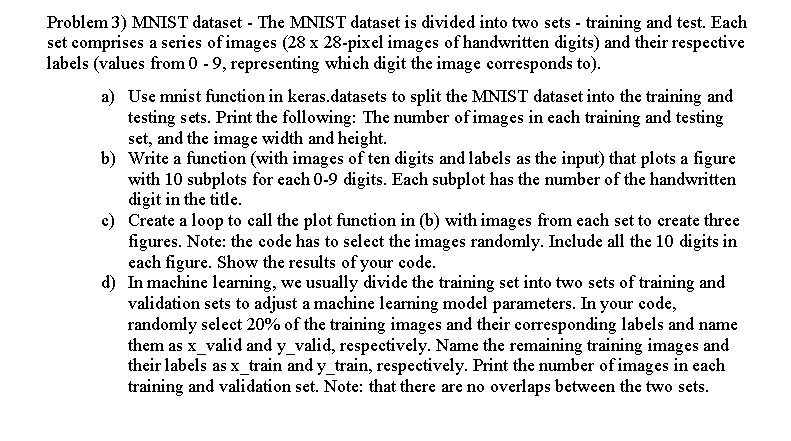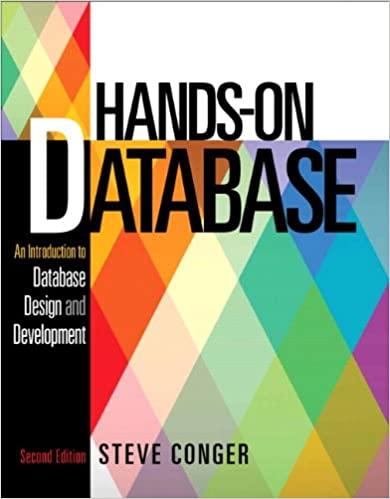
Problem 3) MNIST dataset - The MNIST dataset is divided into two sets - training and test. Each set comprises a series of images (28 x 28-pixel images of handwritten digits) and their respective labels (values from 0-9, representing which digit the image corresponds to). a) Use mnist function in keras.datasets to split the MNIST dataset into the training and testing sets. Print the following: The number of images in each training and testing set, and the image width and height. b) Write a function (with images of ten digits and labels as the input) that plots a figure with 10 subplots for each 0-9 digits. Each subplot has the number of the handwritten digit in the title. c) Create a loop to call the plot function in (b) with images from each set to create three figures. Note: the code has to select the images randomly. Include all the 10 digits in each figure. Show the results of your code. d) In machine learning, we usually divide the training set into two sets of training and validation sets to adjust a machine learning model parameters. In your code, randomly select 20% of the training images and their corresponding labels and name them as x_valid and y_valid, respectively. Name the remaining training images and their labels as x_train and y_train, respectively. Print the number of images in each training and validation set. Note: that there are no overlaps between the two sets. Problem 3) MNIST dataset - The MNIST dataset is divided into two sets - training and test. Each set comprises a series of images (28 x 28-pixel images of handwritten digits) and their respective labels (values from 0-9, representing which digit the image corresponds to). a) Use mnist function in keras.datasets to split the MNIST dataset into the training and testing sets. Print the following: The number of images in each training and testing set, and the image width and height. b) Write a function (with images of ten digits and labels as the input) that plots a figure with 10 subplots for each 0-9 digits. Each subplot has the number of the handwritten digit in the title. c) Create a loop to call the plot function in (b) with images from each set to create three figures. Note: the code has to select the images randomly. Include all the 10 digits in each figure. Show the results of your code. d) In machine learning, we usually divide the training set into two sets of training and validation sets to adjust a machine learning model parameters. In your code, randomly select 20% of the training images and their corresponding labels and name them as x_valid and y_valid, respectively. Name the remaining training images and their labels as x_train and y_train, respectively. Print the number of images in each training and validation set. Note: that there are no overlaps between the two sets







